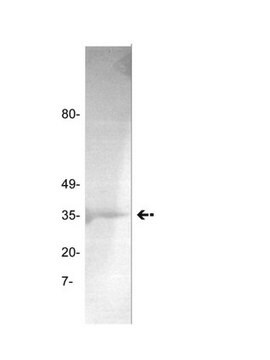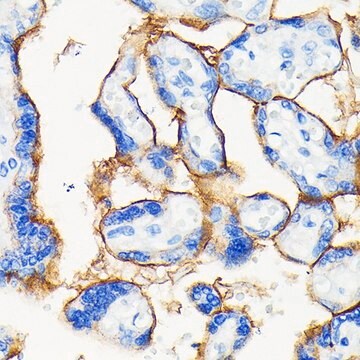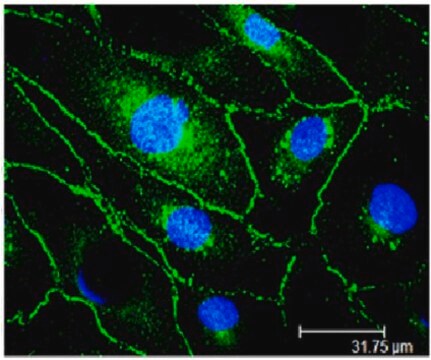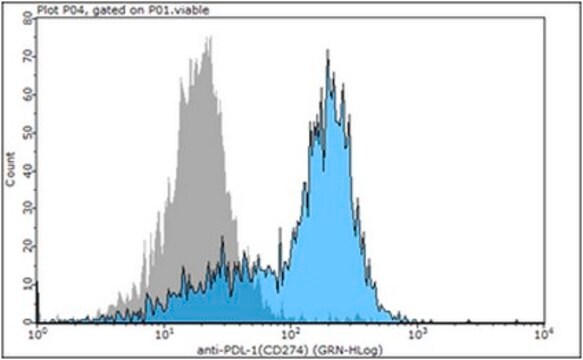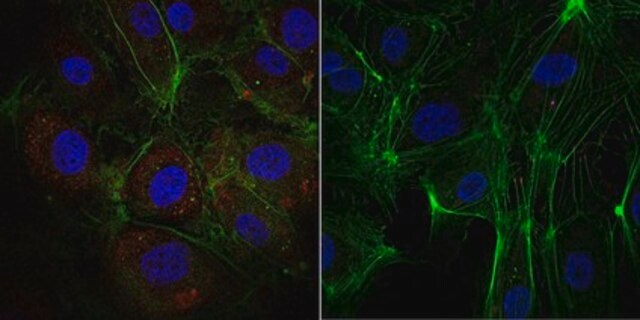詳細
We are committed to bringing you greener alternative products, which adhere to one or more of The 12 Principles of Green Chemistry.This antibody is Preservative-free, produced without the harm or sacrifice of animals and exceptionally stable to allow for ambient shipping and storage if needed and thus aligns with "Waste Prevention", "Designing Safer Chemicals" and "Design for Energy Efficiency".
Click here for more information.
ZooMAb® antibodies represent an entirely new generation of recombinant monoclonal antibodies.Each ZooMAb® antibody is manufactured using our proprietary recombinant expression system, purified to homogeneity, and precisely dispensed to produce robust and highly reproducible lot-to-lot consistency. Only top-performing clones are released for use by researchers. Each antibody is validated for high specificity and affinity across multiple applications, including its most commonly used application. ZooMAb® antibodies are reliably available and ready to ship when you need them.
特異性
Clone 1N7 is a ZooMAb® Rabbit recombinant monoclonal antibody that specifically detects 4E-BP1 protein phosphorylated on threonine 37 and 46.
免疫原
KLH-conjugated linear peptide corresponding to 16 amino acids surrounding phosphothreonine 37and 46 from the N-terminal region of human 4E-BP1.
アプリケーション
Quality Control Testing
Evaluated by Western Blotting in BALB/3T3 A31 cell lysate.
Western Blotting Analysis (WB): A 1:10,000 dilution of this antibody detected 4E-BP1 phosphorylated on Threonine 37 and 46 in lysate from overnight serum starved and PDGF treated ( 50 ng/mL) Balb/3T3 A31 cells.
Tested applications
Western Blotting Analysis: A 1:1,000 dilution from a representative lot detected p-4E-BP1 (Thr37/46) in lysate from NIH3T3 cells stimulated with PDGF (50 ng/mL)
Immunohistochemistry (Paraffin) Analysis: A 1:1,000 dilution from a representative lot detected p-4E-BP1 (Thr37/46) in human pancreas and human colon cancer tissue sections.
Immunocytochemistry Analysis: A 1:100 dilution from a representative lot detected p-4E-BP1 (Thr37/46) in NIH 3T3 cells with and without PDGF treatment.
Peptide Inhibition Assay: Target band detection in lysate from NIH3T3 cells treated with PDGF was prevented by preblocking of a representative lot with the immunogen phosphopeptide ( p-4E-BP1), but not the corresponding non-phosphopeptide.
Affinity Binding Assay: A representative lot of this antibody bound phospho and non-phospho 4E-BP1-Thr37+46 peptides with a KD of 1x 10^-12 in an affinity binding assay.
Note: Actual optimal working dilutions must be determined by end user as specimens, and experimental conditions may vary with the end user
Anti-p-4E-BP1 (Thr37/46), clone 1N7 ZooMAb®, Cat. No. ZRB1403, is a recombinant Rabbit monoclonal antibody that detects p4E-BP1 and is used in Affinity Binding Assay, Immunocytochemistry, Immunohistochemistry, Peptide Inhibition, and Western Blotting.
ターゲットの説明
Eukaryotic translation initiation factor 4E-binding protein 1 (UniProt: Q13541; also known as 4E-BP1, eIF4E-binding protein 1, Phosphorylated heat- and acid-stable protein regulated by insulin 1, PHAS-I) is encoded by the EIF4EBP1 gene (Gene ID: 1978) in human. 4E-BP1 is a member of a family of translation repressor proteins, and a well-known substrate of mTOR signaling pathway. In response to upstream stimuli, such as insulin, EGF, and PDGF, mTORC1 is shown to phosphorylate S6 kinase 1 (S6K1) and 4E-BP1 that stimulates protein synthesis. About 30% of the 4E-BP1 expressed in cells is localized in the nucleus, where it regulates the availability of eIF4E for the cytoplasmic translational machinery, by retaining eIF4E in the nucleus. 4E-BP1 can undergo phosphorylation at multiple sites (Thr 37, 46, 70 and Ser 65, 83, 101, and 112) and the first five sites are phylogenetically conserved among all species. The phosphorylated form is also considered as a marker of activated mTOR signaling. Phosphorylation at Thr37 and Thr46 serves as a priming event, which is followed by phosphorylation at Thr70 and then at Ser 65. The hyper-phosphorylated form is regulated by mTORC1 and abolishes binding to elF4E. Several other kinases have also been shown to phosphorylate 4E-BP1 dependent or independent of mTOR. Phosphorylation of 4E-BP1 at Thr37 and Thr46 by GSK3 reduces its association with elF4E and its release from eIF4E allows cap-dependent translation to proceed. High level of phosphorylated 4E-BP1 is reported in several human cancers and is associated with an unfavorable outcome in several malignancies. Overexpression of cytosolic 4E-BP1 is reported to orchestrate a hypoxia-activated switch from cap-dependent to cap-independent mRNA translation that promotes increased tumor angiogenesis and growth at the level of selective mRNA translation. This ZooMAb® recombinant monoclonal antibody, generated by our propriety technology, offers significantly enhanced specificity, affinity, reproducibility, and stability over conventional monoclonals. (Ref.: Qin, X., et al. (2016). Cell Cycle. 15(6); 781-786).
物理的形状
Purified recombinant rabbit monoclonal antibody IgG, lyophilized in PBS with 5% Trehalose, normal appearance a coarse or translucent resin. The PBS/trehalose components in the ZooMAb® formulation can have the appearance of a semi-solid (bead like gel) after lyophilization. This is a normal phenomenon. Please follow the recommended reconstitution procedure in the data sheet to dissolve the semi-solid, bead-like, gel-appearing material. The resulting antibody solution is completely stable and functional as proven by full functional testing. Contains no biocide or preservatives, such as azide, or any animal by-products. Larger pack sizes provided as multiples of 25 μL.
再構成
300 μg/mL after reconstitution at 25 μL per vial. Please refer to guidance on suggested starting dilutions and/or titers per application and sample type.
保管および安定性
Recommend storage of lyophilized product at 2-8°C; Before reconstitution, micro-centrifuge vials briefly to spin down material to bottom of the vial; Reconstitute each vial by adding 25 μL of filtered lab grade water or PBS; Reconstituted antibodies can be stored at 2-8°C, or -20°C for long term storage. Avoid repeated freeze-thaws.
法的情報
ZooMAb is a registered trademark of Merck KGaA, Darmstadt, Germany
免責事項
Unless otherwise stated in our catalog or other company documentation accompanying the product(s), our products are intended for research use only and are not to be used for any other purpose, which includes but is not limited to, unauthorized commercial uses, in vitro diagnostic uses, ex vivo or in vivo therapeutic uses or any type of consumption or application to humans or animals.




